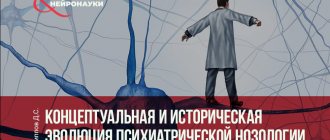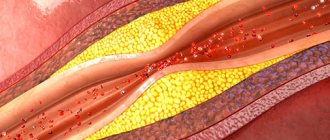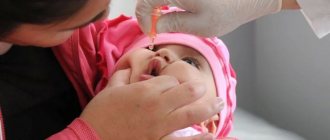Causes of disability
As noted above, epilepsy is part of a group of neurological disorders in the functioning of the brain and is accompanied by specific seizures. And although epileptic seizures are not a necessary phenomenon, when they occur the patient is not able to be responsible for his actions, and may not even deliberately cause harm to himself (for example, in the event of an unsuccessful fall, etc.).
It is noteworthy that outside of seizures, the life of an epileptic does not have any restrictions and is quite ordinary. For this reason, many do not seek special status. The need for it arises only in those whose seizures are quite frequent and dangerous, including for others. Then you need to go through the ITU and establish the degree of restrictions with a specific group.
It is relevant to assign preferential status if the patient has to:
- work as a vehicle driver;
— carry weapons, come into contact with radioactive and chemical substances;
- use complex mechanisms, be at heights, under water, etc.
ITU experts prohibit these types of activities if epilepsy manifests itself quite clearly and has led to persistent disorders of body functions.
In particular, disability is established if, during the period between epileptic attacks, it is necessary to:
- regularly undergo medical examination and examination;
- take medications that have side effects.
According to experts, disabled epileptics may experience behavioral disorders, mental disorders, intellectual degradation and visible manifestations of epileptic disease on the face.
Important
! To establish a special status for adults with epilepsy, it is important to document seizures.
Disability groups
If a patient is diagnosed with epilepsy, he may be sent to MSE if certain factors are present:
- the patient creates dangerous conditions in the workplace;
- the patient develops complications when taking antiepileptic drugs, there are complications of the underlying disease - epilepsy;
- a child with developmental delay and epilepsy is referred for expert assessment;
- the patient is referred for MSE in the absence of positive dynamics after surgical treatment.
The disability group for epilepsy will depend on the severity of the patient's condition. The first disability group is issued for severe mental disorders, neurological disorders, loss of skills, including self-care, and severe intellectual and mnestic impairments. The frequency and severity of attacks may vary.
The second disability group for epilepsy is issued for the following conditions:
- there is a pronounced mental disorder, the inability to control one’s behavior, to fully work, study, and the inability to provide high-quality self-care;
- generalized epileptic seizures occur four or more times a month;
- psychomotor seizures more than once a month;
- partial seizures more than five times a day;
- complication of epileptic syndrome (repetition of an attack when the first attack is not completed, consciousness does not recover) is observed more than once every two to three months;
- severe motor dysfunction.
The third disability group is assigned for the following conditions:
- partial seizures (no loss of consciousness occurs) are observed at least three times a day;
- attacks with loss of consciousness occur at least twice a month;
- psychomotor seizures occur once every two to three months;
- complication of epileptic syndrome once every four to six months;
- the patient has moderately severe mental disorders, minimal personality changes;
- There is a decrease in muscle strength and a moderate limitation of static-dynamic capabilities.
What laws govern
Now let’s look at the regulations that regulate the procedure for establishing status at the state level, these are:
— Federal Law of November 24, 1995 No. 181-FZ (as amended on October 30, 2017) “On the social protection of disabled people in the Russian Federation”;
— Decree of the Government of the Russian Federation of February 20, 2006 No. 95 (as amended on August 10, 2016) “On the procedure and conditions for recognizing a person as disabled.”
It is also worth highlighting the following Orders of the Ministry of Labor and Social Protection of the Russian Federation:
— dated October 11, 2012 No. 310n (with additions and amendments dated December 29, 2021) “On approval of the Procedure for the organization and activities of ITU federal government institutions”;
— dated January 29, 2014 No. 59n “On approval of the Administrative Regulations for the provision of public services for conducting MSE”;
- dated August 27, 2021 No. 585n “On classifications and criteria used in the implementation of medical and social examination of citizens by federal government agencies of the ITU.”
How to get disability?
When it comes to applying for disability, you should make an appointment with a neurologist. It is he who will issue a referral to visit all the required doctors and undergo the relevant tests.
Thus, the mandatory conditions should be considered:
- complete analysis of both blood and urea;
- X-ray of the skull in several projections (preferably in at least two);
- examination of the fundus and visual functions;
- echo-EG;
- electroencephalography (EEG);
- if seizures and deterioration of the condition began less than six months ago, then it is necessary to conduct a computed tomography (CT) or magnetic resonance imaging (MRI);
- psychotherapist's decision.
After visiting all the doctors and passing the listed tests, the neurologist is obliged to:
- issue a referral for medical and social examination (MSE) in accordance with form number 088/a-06;
- refer the epileptic to a special commission, where the presence of the disease will be checked, as well as the correctness of filling out all documentation.
After this, the package of documents will be certified by the signature and seal of the head physician of the medical institution. This concludes the first stage. At the next stage, the person must come to the ITU office, where the exact timing of the examination will be indicated.
If a person is recognized as disabled, he will be given a certificate of receipt of one or another disability group. In addition, the medical committee must develop an individual rehabilitation plan (IRP) within 30 days from the date of the decision. Only after approval of the created program, within three days it should be sent to the department of social protection at the place of residence of the epileptic, or it should be handed over to him at the regional ITU office.
After all the required documents have been received, it is necessary to contact the social protection authorities and the pension fund in order for the appropriate benefits, allowances and pension payments to be issued.
What is permanent disability?
There is also the concept of permanent disability, which is assigned to those patients who were previously included in the first or second group. At the same time, the epileptic is faced with a permanent loss of ability to work, and all therapeutic and preventive measures for five years turned out to be ineffective.
Thus, receiving a disability group for epilepsy gives a person more than just social protection. This is an opportunity to work without any problems, receive legal payments and compensation, as well as adequate medical care.
Author of the article:
Sokov Andrey Vladimirovich |
Neurologist Education: In 2005, she completed an internship at the First Moscow State Medical University named after I.M. Sechenov and received a diploma in the specialty “Neurology”. In 2009, she completed her postgraduate studies in the specialty “Nervous Diseases”. Our authors
What features may arise
Children will be examined in the same way as adults, only parents are present with minors during the examination. But children with disabilities are given the status of “disabled child” without a group. A certain category is established from the age of 18 based on the results of the adult ITU.
We also note that permanent rehabilitation is recommended for disabled epileptics, regardless of age, since their disease cannot be treated and requires lifelong medication. And therapy helps to suppress the centers in the brain that are active in the disease in question. Plus, psychological rehabilitation is almost always required to overcome complexes and pressures caused by conditions.
To summarize, we note that in Russia, according to statistics, every hundredth person has epilepsy, and men face this problem more often than women. Be that as it may, against the background of the disease, many are given group 3, and only 1% of disabled people with epilepsy have the most severe category 1.
Disability in children
To assign disability for epilepsy in children, you need to repeat the same thing as for an adult. The child is assigned to a legal representative (parent or guardian), and together with him he undergoes medical examination.
The difference is that in cases of childhood epilepsy, a disability group is not assigned. There is only a general concept of “disabled child”, which applies to all minor epileptics.
And yet, whether epilepsy is a disability or not is decided strictly individually. For some it does not pose a threat, but for others it ruins the life. A person can be recognized as disabled only in cases where, due to seizures, he exposes himself or other people to danger.
Call me disabled
“Stop denying disabilities to children with cleft lips and palates” - this was the “cry from the heart” of one of the mothers that appeared on the change.org portal. The reason for collecting signatures (the appeal, by the way, was supported by 80 thousand people), letters to the Federation Council and the Commissioner for Children's Rights Pavel Astakhov was the removal of the child's disability.
Cleft lip and cleft palate are birth defects. If a baby undergoes surgery on time, he will grow up healthy. If help is late or the operation is unsuccessful, as well as in cases of severe damage, complications are possible, and treatment is delayed for many years. Previously, such children were given a disability, and along with it they received treatment and medicine for free. But last year, the procedure for recognizing disability changed, and children whose condition improved as a result of treatment began to have their disability removed.
At the same time, mothers complain: taking advantage of the “fuzzy” criteria by which ITU specialists “give” or “don’t give” disability, they began to deprive even children of this status who still need to put in a lot of effort before recovery.
“We need at least three more operations; in addition, we need expensive sessions with a speech pathologist-speech pathologist and long-term treatment with an orthodontist,” writes one of the mothers. “But during the medical and social examination we were told twice that the child was healthy, he had only “minor” deviations, and nothing more. But how can one suddenly turn from a disabled person with such a congenital pathology into a healthy person?”
Children suffering from insulin-dependent diabetes mellitus, cystic fibrosis, and other severe, difficult-to-treat diseases find themselves in the same situation.
The problems are similar: their essence boils down to whether the state will pay for the treatment of children or whether parents will have to bear a heavy burden without help. And treatment of such children is always very expensive. “Little hares” and “wolf cubs” require difficult, often numerous operations, and then long-term rehabilitation with orthodontists and defectologists (most suffer from speech apparatus). The health of children with other pathologies directly depends on drug therapy. Moreover, they need medications for life.
“Cystic fibrosis is included in the federal program “7 nosologies,” explained Elena Kondratyeva, professor, head of the scientific advisory department of cystic fibrosis at the Federal State Budgetary Institution “Medical Genetic Research Center”. “And our children (there are about 2.5 thousand of them in the country as a whole) receive the main drug for its treatment free of charge. But cystic fibrosis is a polymorphic disease; it affects not only the lungs, but also other organs. Patients do not have a functioning pancreas - they need replacement enzymes. Such children are susceptible to Pseudomonas aeruginosa infection - this is a very “evil” flora that is difficult to treat. Therefore, courses of powerful inhaled or intravenous antibiotics have to be prescribed regularly, up to six times a year. By the way, when such therapy began to be used routinely, the life expectancy of our patients almost doubled.
But a child receives all these medications free of charge only if he is disabled. And the cost of such treatment per year for one patient is estimated at from 15 to 30 thousand US dollars for different countries. The result is: with antibacterial and basic therapy (the annual cost of treatment is from 450 thousand to 1.5 million rubles), lung function is normalized. The child looks healthy and his disability is removed. At the same time, preventive and concomitant therapy becomes completely unavailable for him, and over time, his health inevitably deteriorates sharply again, lung function progressively decreases, and other complications arise. That is, huge amounts of money for the “Seven Nosologies” are spent on the patient (an average of 470 thousand rubles per year), but the disease returns.”
In developed countries, receiving medications is included in health insurance, so there is no point in “holding onto” a disability. For many years, our system is essentially a “vicious circle”: while a person feels tolerably well, he is forced to pay for medications on his own. When it comes to disability, the state helps. Although if the same medications were more accessible at an early stage of the disease or preventatively, it would not have reached the point of disability.
“The transition to new criteria used in conducting medical and social examinations was carried out last year in accordance with international standards after our country ratified the Convention on the Rights of Persons with Disabilities,” explained Lyudmila, Doctor of Medical Sciences, head of scientific and methodological research, to RG Naumenko. — We have switched to a quantitative, percentage, system for assessing the severity of persistent dysfunctions of the human body caused by diseases, consequences of injuries or birth defects. This allows you to make a more objective decision about the category of “disabled child”, disability group, and the need for rehabilitation. Deviations in health status can be eliminated after rehabilitation, so disability is not considered a permanent phenomenon. But if rehabilitation measures are ineffective, disability is determined indefinitely for adults, and for children under 18 years of age.
This happens with progressive diseases, when even the most modern treatment does not make it possible to stabilize the pathological process. Conducting an examination is a complex process; it includes expert rehabilitation diagnostics and observation results; the effectiveness of treatment and the potential capabilities of each person are assessed. Therefore, we worked together with the Ministry of Labor on the document, attracted our best doctors - endocrinologists, pulmonologists, and other specialized specialists and prepared an addition to the current order, which should remove its discrepancies.
Let me also remind you that to protect the rights of citizens, we have a system for appealing ITU decisions. If the child’s mother does not agree with the bureau’s decision, she has the right to appeal it to the ITU Main Bureau, as well as to the ITU Federal Bureau. In addition, at any stage, she has the right to defend her interests in court.”
Officially
I received “RG” and a response from the Ministry of Labor. “Currently, based on the results of the monitoring of the implementation of Order No. 664n carried out by the Russian Ministry of Labor, a draft order has been prepared to amend the classifications and criteria.
This document specifies approaches to assessing the severity of impaired body functions and the criteria for establishing disability, including for children, and clarifies the wording. This will eliminate their unequal interpretation in different regions and by different experts.
The new edition of the annex to the order includes, among other things, such diseases and defects as insulin-dependent diabetes mellitus, cleft lip and palate (“cleft lip” and “cleft palate”), phenylketonuria, and bronchial asthma in children. Functional dysfunctions caused by diseases such as cystic fibrosis are described in more detail; congenital malformations, including heart defects, musculoskeletal system (congenital dislocation of the hip, clubfoot, etc.), lesions of the central nervous system (including hydrocephalus); chronic renal failure.
“The Federal Bureau of ITU has organized work on methodological support for the application of this order by specialists from medical and social examination institutions.”










